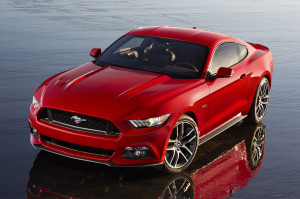
In the muscle car heydays of the 1960’s there truly was no replacement for displacement. If you wanted to go faster, you put a bigger motor in your project, or you bored and stroked the one you had. Many strapped on big blowers for even more power, but these created a parasitic draw on the engine. Superchargers use the crankshaft or another drive pulley with a parallel screw or fan shaped blades to force air into the motor increasing combustion and power. The effort of the motor to drive the pulley and the charger uses up more fuel, and power. A turbo charger uses exhaust gasses to spin a turbine that forces air into the engine. It serves the same purpose, but without the parasitic draw. Turbo chargers also do not decrease fuel economy like a super charger. In most cases it can even improve mpg under a light foot. Turbochargers have been a factory option on diesels since the early 1990s. Today, carmakers are discovering that replacing large gas guzzling engines with smaller displacement turbocharged ones provides more power with better economy.
 The 2005 Mustang GT delivered nearly the same power (300hp) and 0-60, and got a little over 20mpg if you drove like a grandma. The truth is, people want to be able to drive their cars, Import or American Muscle, without watching the gas gauge all the time. Ford may finally be warming up to this idea. In 2015 Ecoboost Mustang GT will be released with the Ecoboost package as an option. Surprisingly it will be packed with the 2.3L turbo charged 4 cylinder version. While this may seem laughable to any old muscle car fans, this motor spits out 310hp while averaging 30mpg highway.If fuel economy is not an issue, there’s nothing wrong with combing cubic inches and a turbo charger. With the cheap and easy availability of ebay turbo kits, budget hot-rodder’s are taking advantage of the opportunity to quickly and affordably add more power.This is nothing new for the track, but street-cars have seen limited use with turbos in the U.S.
The 2005 Mustang GT delivered nearly the same power (300hp) and 0-60, and got a little over 20mpg if you drove like a grandma. The truth is, people want to be able to drive their cars, Import or American Muscle, without watching the gas gauge all the time. Ford may finally be warming up to this idea. In 2015 Ecoboost Mustang GT will be released with the Ecoboost package as an option. Surprisingly it will be packed with the 2.3L turbo charged 4 cylinder version. While this may seem laughable to any old muscle car fans, this motor spits out 310hp while averaging 30mpg highway.If fuel economy is not an issue, there’s nothing wrong with combing cubic inches and a turbo charger. With the cheap and easy availability of ebay turbo kits, budget hot-rodder’s are taking advantage of the opportunity to quickly and affordably add more power.This is nothing new for the track, but street-cars have seen limited use with turbos in the U.S.
Vendors like Summit and JEGS are now selling blow-through carburetor rebuild kits which modify the internals for forced induction. Demon offers an off-the-shelf blow-through carb designed to handle boost. In the past boosted carburetors often had trouble running rich at lower throttle. Demon has discovered that lower CFM carbs with modified discharge boosters, solve this problem without restricting power at WOT (Wide Open Throttle).
 In addition, turbos can easily be fine-tuned and adjusted to provide large power increase over a consistent band of rpm’s. A larger cam, or higher flowing heads can cause a loss in torque on a stock N/A motor with stock gears, when not combined with supporting modifications to the motor or drivetrain. While it is important not to over-boost a stock motor, a turbo charger can provide a steady increase in acceleration and power over full power band and rpm range. It’s important to remember that big displacement in big beautiful cars has always been an American tradition. It’s much harder in modern times to throw together an engine build that makes significant power increase over stock for under $5000. A Turbo kit and tune can produce up to 100hp over stock or more. With proper fueling and a tune, most of these installs will still total out cheaper than an engine build producing the equivalent power.
In addition, turbos can easily be fine-tuned and adjusted to provide large power increase over a consistent band of rpm’s. A larger cam, or higher flowing heads can cause a loss in torque on a stock N/A motor with stock gears, when not combined with supporting modifications to the motor or drivetrain. While it is important not to over-boost a stock motor, a turbo charger can provide a steady increase in acceleration and power over full power band and rpm range. It’s important to remember that big displacement in big beautiful cars has always been an American tradition. It’s much harder in modern times to throw together an engine build that makes significant power increase over stock for under $5000. A Turbo kit and tune can produce up to 100hp over stock or more. With proper fueling and a tune, most of these installs will still total out cheaper than an engine build producing the equivalent power.




Leave a Reply